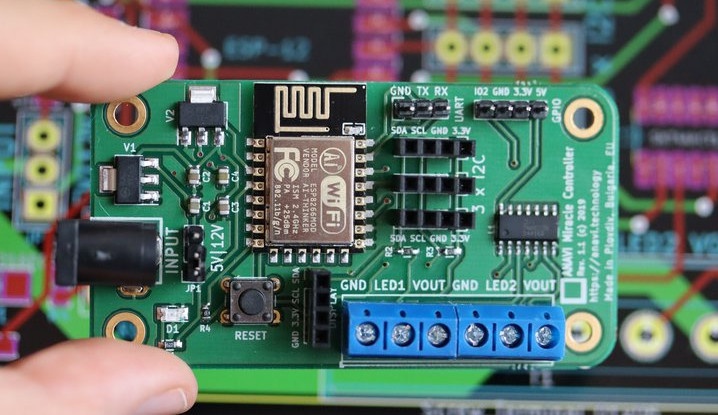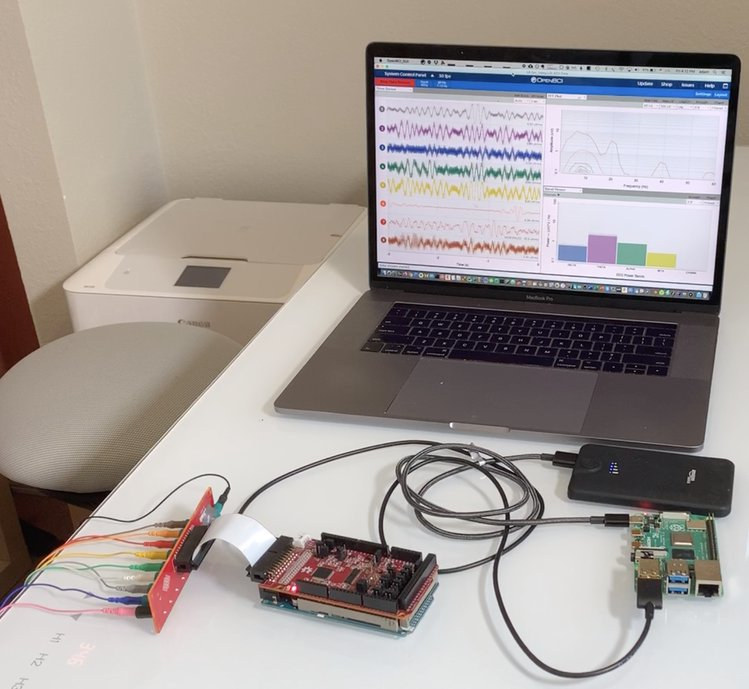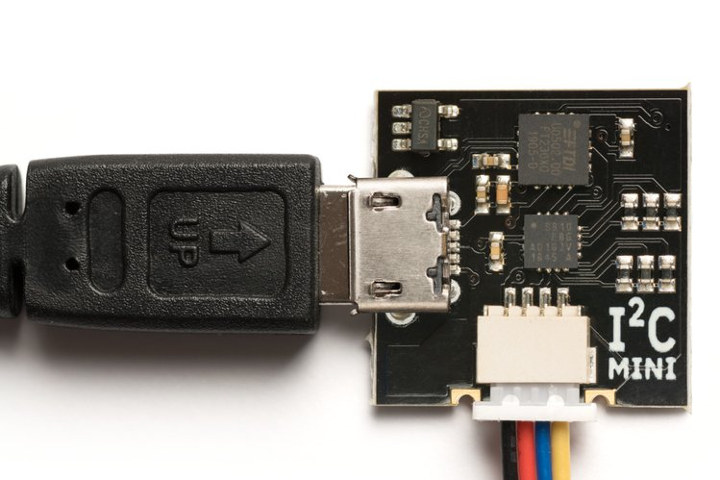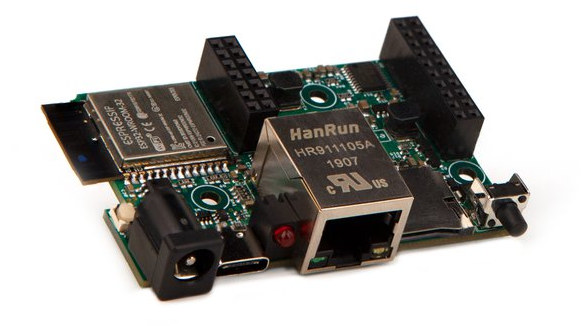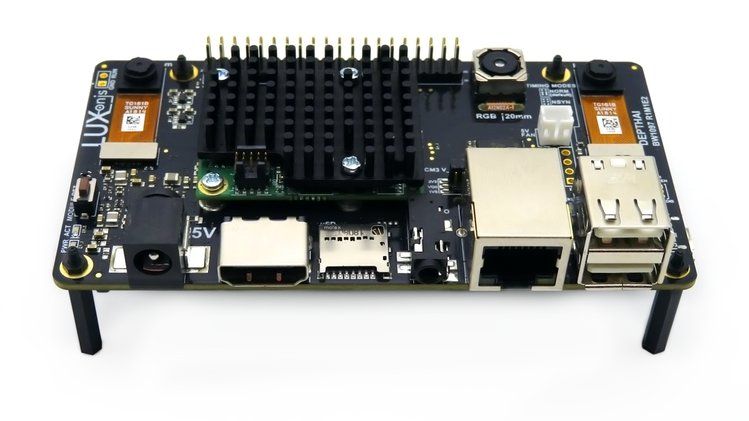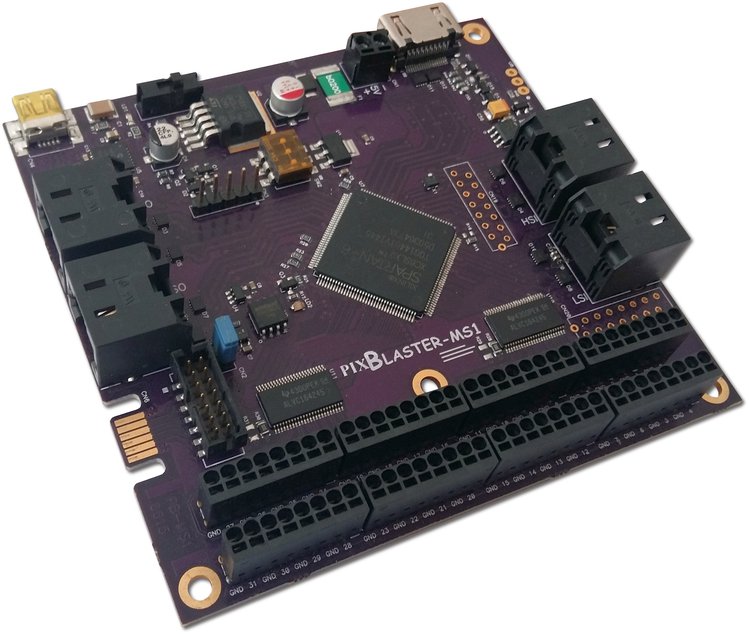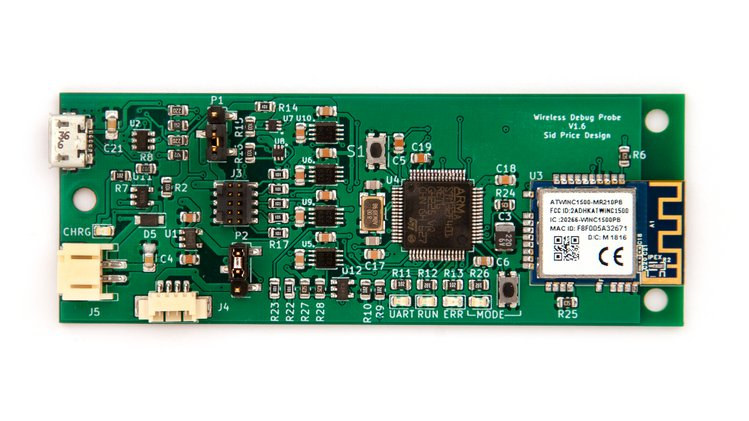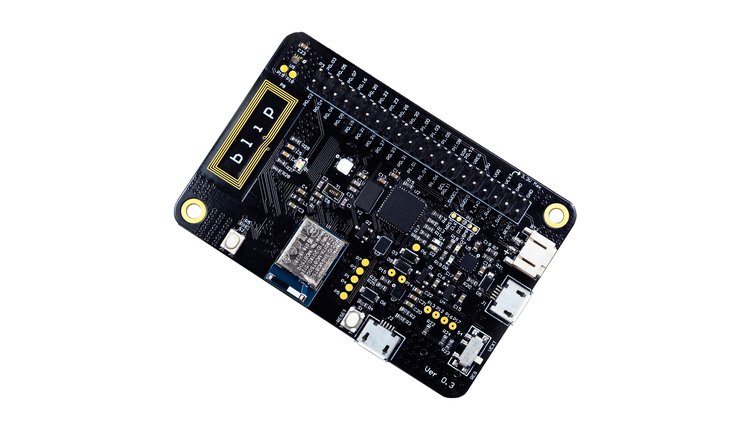Last year, we wrote a tutorial showing how to control an RGB LED strip Control ANAVI Light ESP8266 controller. The board only works with standard non-addressable 12V LED strips however, and Leon ANAVI received requests to support 5V and 12V addressable LED strips such as NeoPixels, WS2811, WS2812, or TM1804. So he updated ANAVI Light Controller design and has now launched a new open-source hardware certified board based on ESP8266 WiFi chip: ANAVI Miracle Controller. ANAVI Miracle Controller specifications: MCU – Espressif Systems ESP8266 Tensilica L106 32-bit processor Connectivity – Wi-Fi 4 802.11 b/g/n LED Strips Support – Up to two 5V or 12 V addressable LED strips; Supported models include WS2812, WS2812B, WS2811, TM1804, etc. (LED strip chipsets supported by the FastLED library) Expansion 4x I2C header for mini OLED display, sensors, and others 4-pin “GPIO” header with 1x GPIO, GND, 3.3V, and 5V signals Misc – Reset button, […]
HackEEG Arduino Shield Reads Signals from Your Brain (EEG), Muscles (EMG), and Heart (EKG)
Biosignals are signals from living beings that can be continually measured & monitored, and some common methods to measure those biosignals include electroencephalogram (EEG) to monitor the electrical activity in your brain, electromyography (EMG) for recording the electrical activity produced by skeletal muscles, and electrocardiogram (EKG or ECG) to measure electrical activity of your heartbeat. Those can be used for brain interfaces which according to a recent Ericsson’s report may become commonplace by 2030 with users just thinking about commands, prosthetic arms, health and disease monitoring, and so on. Starcat has designed the HackEEG shield to experiment with all those three methods using an Arduino board and electrodes. HackEEG features and specifications: TI ADS1299 8-Channel, 24-Bit ADC for biopotential measurements SPI EEPROM for storing configuration data 8x analog-digital conversion (ADC) channels, each with a 24x programmable-gain amplifier (PGA). Up to 4x shields can be stacked on one Arduino Due for […]
I2CMini is tiny USB to I2C Bridge for your PC or SBC (Crowdfunding)
Last year, we wrote about Excamera Labs SPIDriver tool to control and monitor SPI devices from your computer, but this year the company launched another similar product for I2C: I2CDriver. Both debugging tools show signals and information on a small display, but if all you want to do os to control I2C devices from your computer or isolated from an SBC, Excamera Labs has now come up with the tiny I2CMini USB to I2C bridge board. I2CMini key features & specifications: Fast transfer – sustained I²C transfers at 400 and 100 kHz I²C pullups – programmable I²C pullup resistors, with automatic tuning Dual I²C ports – a castellated 0.1″ header, plus a Qwiic standard connector Jumpers – Color-coded Sparkfun Qwiic jumper included for instant connection 3.3 V output: output levels are 3.3 V, all are 5 V tolerant Supports all I²C features – 7- and 10-bit I²C addressing, clock stretching, […]
esp32MX-E ESP32 Board Comes with Ethernet and USB-C Ports (Crowdfunding)
We’ve already covered several ESP32 boards with Ethernet including Olimex ESP32-GATEWAY and Silicognition wESP32, and I’ve just noticed Espressif also made its own with ESP32-Ethernet-Kit. Modtronix Engineering has another take with esp32MX-E board that beside Ethernet also exposes a USB-C port, a MicroSD card slot, and also adds an STM32F0 microcontroller acting as an I2C I/O expander. esp32MX-E specifications: Wireless Module ESP32 dual-core LX6 microprocessor at 160 or 240 MHz, 4 MB Flash, 520 KB SRAM Wi-Fi 4 802.11 b/g/n Bluetooth 4.2 BR/EDR & BLE Storage – MicroSD card slot USB – USB Type-C connector for programming, power, and Virtual COM port Expansion via 14-pin and 20-pin female headers 22x I/O pins of which 4 are inputs only. 4x 5 V tolerant I/O pins Not all I/Os are available when the SD Card is used Programmable pull-up and pull-down resistors on most inputs Secondary MCU – I²C I/O expander implemented […]
DepthAI Brings AI plus Depth to the Raspberry Pi (Crowdfunding)
Edge computing on the Raspberry PI has been a bit of ups and downs, especially with everyone gearing for AI in everything. The Raspberry Pi, on its own, isn’t really capable of any reliable AI applications. Typical object detection on the Raspberry Pi would get you something around 1 – 2 fps depending on the nature of your model and this because all those processing is done on the CPU. To address this poor performance of AI applications on the Raspberry Pi, AI Accelerators came to the rescue. The Intel Neural Compute Stick 2 is one such accelerator capable of somewhere around 8 – 15 fps depending on your application. The NCS2, which is based on the Myriad X VPU technology, offers so much more than the compute stick delivers, and this is something that the team behind DepthAI has exploited to create a powerful AI module for edge computing […]
Pixblasters MS1 Video LED Controller Outputs HDMI Input to 16K+ LED Video Walls (Crowdfunding)
Pixblaster Video LED Controller Pixblasters, a company focused on LED signage and video display, have started a Crowd Supply campaign for their MS1 Video Controller. The Pixblaster MS1 controller can be attached to any laptop or computer with HDMI output (think Raspberry Pi SBC) and control 16,384 LEDs without any programming, physical modifications or soldering. Extreme Scalability The market the MS1 video controller is aimed at is small business and makers, who hadn’t before had a controller with this much scalability. The company is saying that the MS1 can be daisy-chained together to control hundreds of thousands of LEDs and act as a full video monitor across hundreds of meters of LED strips. Programming The unit can easily and with little technical knowledge connect WS212B-Based addressable LED strips together for a complex output of digital displays, even mirroring a video display in some instances. Target Users The ability to use […]
ctxLink Open Hardware WiFi Debug Probe is based Black Magic Probe (Crowdfunding)
Last month, we wrote about Blip nRF52840 dev board that also included an STM32F103 MCU running the open source Black Magic Probe (BMP) firmware for debugging and programming. Based on the original Black Magic Probe hardware product page, BMP is a JTAG and SWD adapter used for programming and debugging ARM Cortex MCUs, and does not require intermediate programs such as OpenOCD or STLink server. Instead, you can run GNU Debugger (GDB) and select the virtual COM port offered by the debug board. The reason I’m bringing BMP again today, is because a new open source hardware wireless debugging probe for Cortex-M based on Black Magic Probe has been launched in the last few days. ctxLink key features and specifications: Microcontroller – STMicro STM32F401RE Arm Cortex -M4F MCU at up to 84 MHz Connectivity – 802.11b/g/n WiFi via Microchip WINC1500 module USB – 1x micro USB port for connection to […]
Blip Nordic nRF52840 Dev Board Includes STM32 Black Magic Probe Programmer & Debugger (Crowdfunding)
The Latest Electronut Labs Nordic nRF52840 Based Dev Board Electronut Labs has started its Crowd Supply campaign for Blip, a Nordic nRF52840 based development board. With many onboard sensors and systems, the boards are aimed at prototyping and projects in a wide variety of BLE and 802.15.4, wireless application scenarios. It has a programmer and debugger built-in. Past Articles Electronut Labs has a series of Nordic Semiconductor SoC projects previously reported on including Papyr, a Bluetooth E-Paper Display and Bluey, a BLE Development board using the Nordic nRF52832, and CNXSoft also published an article comparing several of the Nordic SoC available in development boards for Bluetooth 5 (BLE5). The Features the Stand Out Blip has a Black magic Probe compatible programmer and debugger built-in, along with a temperature/humidity sensor, ambient light intensity sensor, and a three-axis accelerometer. The board is designed to prototype very low power devices and an ability […]


